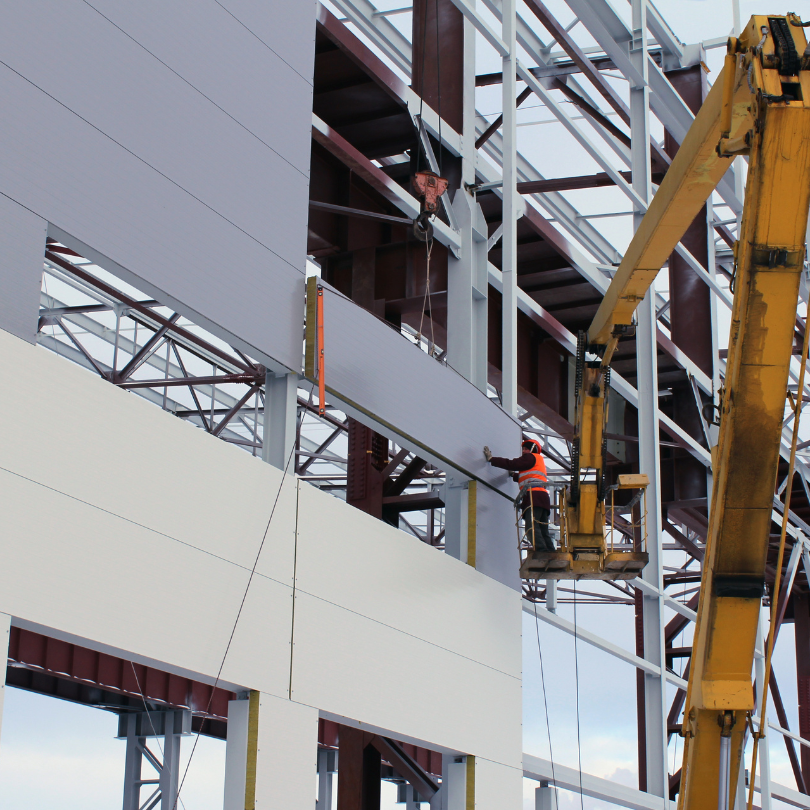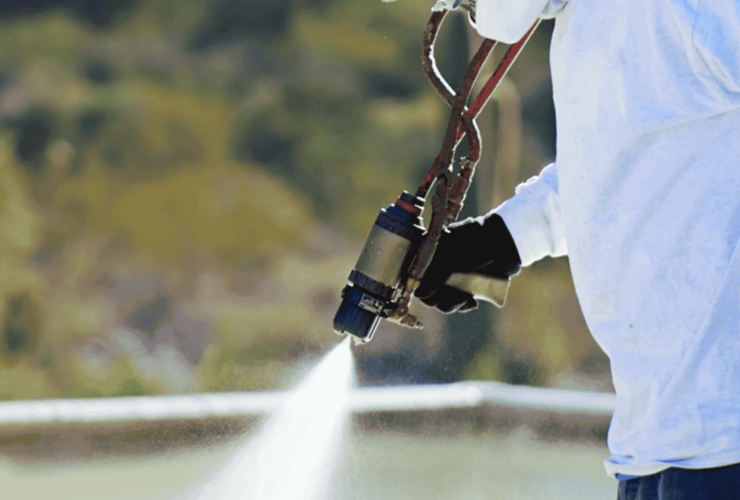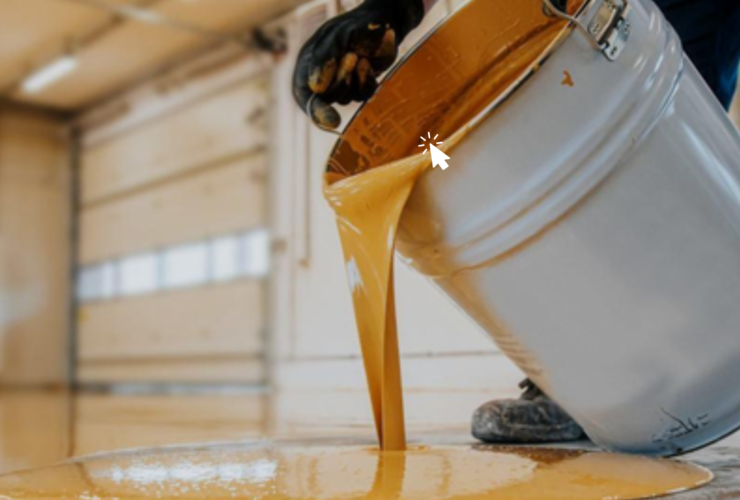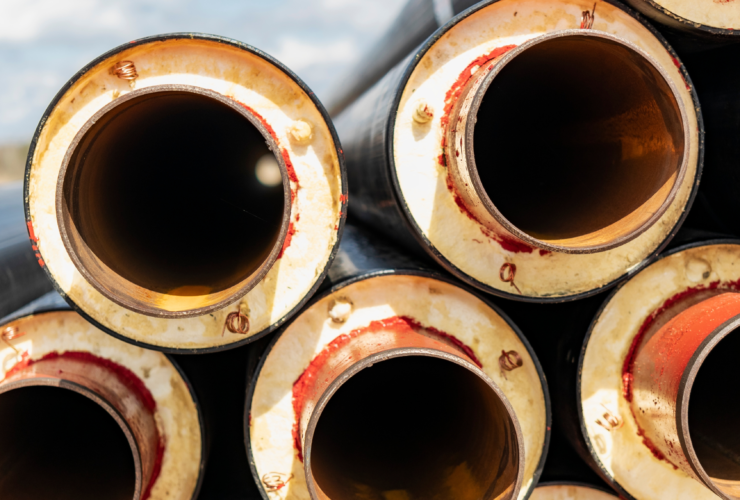Rigid polyurethane foam stands out as one of the most effective insulation materials used today to increase energy efficiency and support environmental sustainability. This unique material is preferred in construction, automotive, home appliances and many other industrial applications due to its low thermal conductivity, high strength and chemical resistance. Polyols and isocyanates, which are the main components of rigid polyurethane foam, are mixed in certain proportions and form the foam structure as a result of chemical reaction. Various techniques used in the production process optimize the physical and chemical properties of the foam and offer solutions for different needs. The fact that rigid polyurethane foam exhibits superior performance compared to other insulation materials with its energy-saving potential and long-lasting structure reinforces the indispensability of this material in industrial applications.
Features and Benefits/Advantages
Rigid polyurethane foam is characterized by its superior insulation properties and versatile use. With a density usually between 30-40 kg/m³, this material provides excellent thermal insulation and maximizes energy savings thanks to its low thermal conductivity (approximately 0.018-0.024 W/m-K). It is also used in a variety of applications in the construction industry, such as wall and roof panels, thanks to its high compressive strength and structural integrity. Rigid polyurethane foam, which also stands out with its chemical resistance, moisture and water resistance, offers a long-lasting solution. Its non-flammability properties make this material a preferred option in critical applications in terms of fire safety. All these technical features show that rigid polyurethane foam not only increases energy efficiency, but also contributes to the construction of sustainable and durable structures.

Chemical Structure and Production Process
Rigid polyurethane foam is formed as a result of the chemical reaction of two main components: polyols and isocyanates. Polyols are high molecular weight compounds that can be modified with various molecular structures and functional groups. Isolocyanates contain reactive chemical groups and react with polyols to form polyurethane chains. The production process starts with mixing these two components in appropriate proportions and gasifying agents are used to foam the mixture. The mixture expands rapidly during the reaction and takes the foam structure. Rigid polyurethane foam produced by various methods such as spray foam, molding and continuous production lines can be optimized for different applications. This production process determines the material’s superior properties such as low thermal conductivity, high strength and durability and offers a wide range of uses.
The various additives and process parameters used in the production of rigid polyurethane foam play a critical role in determining the final performance of the material. Catalysts ensure uniformity and homogeneity of the foam structure while controlling the reaction rate. Flame retardants help meet safety standards by increasing fire resistance. Surfactants used in the foam production process control the cell structure, which directly affects the mechanical and thermal properties of the foam. Parameters such as pressure and temperature applied during production optimize the density and strength of the foam. Furthermore, the incorporation of recycled polyurethane materials into the production process contributes to circular economy goals while increasing environmental sustainability. This versatile production process and carefully selected components ensure that rigid polyurethane foam delivers superior performance in a wide range of applications.

Physical and Chemical Properties
The physical and chemical properties of rigid polyurethane foam include several outstanding qualities that make it an ideal material for many applications. With a density usually ranging between 30-40 kg/m³, rigid polyurethane foam provides high thermal insulation with low thermal conductivity (approximately 0.018-0.024 W/m-K). This low thermal conductivity increases energy efficiency and reduces both heating and cooling costs. Its mechanical strength is also very high; thanks to its high compressive strength and structural integrity, it can be safely used in building insulation, load-bearing panels and other construction applications. The cell structure of the foam provides water and moisture impermeability when the closed cell ratio is high, making it suitable for outdoor applications.
From a chemical point of view, the durability of rigid polyurethane foam and its resistance to various chemicals ensures the long life of the material. Polyurethane foam is resistant to many acids, bases and solvents, making it ideal for harsh industrial environments. Its non-flammability properties are also an important advantage; when equipped with special flame retardant additives, it provides extra protection against fire and meets safety standards. These properties make rigid polyurethane foam a versatile material that not only provides energy efficiency and structural durability, but can also withstand a variety of environmental and chemical conditions.
Areas of Use
Building and Construction Sector
Rigid polyurethane foam has a wide range of uses in the construction industry, especially in building insulation. Used in roofs, walls and floors, this foam increases energy efficiency and reduces heating and cooling costs. When used in sandwich panels, wall and roof coverings, it provides structural durability and extends the life of the building. Thanks to its low thermal conductivity, it is also an ideal solution for insulating cold storage areas and cooling devices. The closed cell structure of rigid polyurethane foam offers water and moisture proof properties, making it suitable for outdoor applications.

Home Appliances Industry
In the home appliance industry, rigid polyurethane foam is used to insulate appliances such as refrigerators and freezers. Its high insulation performance reduces energy consumption, allowing these appliances to run more efficiently. The excellent insulating properties of polyurethane foam allow refrigerator and freezer doors to be made thinner and lighter, thus saving energy while increasing internal volume. It also contributes to sustainability goals by extending the life of white goods.

Industrial Applications
In industrial applications, rigid polyurethane foam is preferred in many areas such as pipe insulation, tank insulation and special protective coatings. The foam’s resistance to environmental conditions, chemical resistance and long lifetime make it an ideal material for harsh industrial environments. It also plays a critical role in energy efficiency and safety in large-scale industrial projects such as power plants, refineries and chemical plants. The versatile properties of rigid polyurethane foam enable industrial processes to be optimized and costs reduced.
Rigid Foam Types
Rigid polyurethane foam is produced in various forms for different application needs and each form has its own advantages. Spray polyurethane foam is one of the most widely used forms and is often used in building insulation. This foam, which is sprayed onto the surface in liquid form during application, expands rapidly, completely covering the surface and providing excellent insulation. The biggest advantage of spray foam is that it creates a continuous layer of insulation even on surfaces with complex geometries. This prevents the formation of thermal bridges, maximizing energy efficiency. In addition, spray foam can also be safely used on the exterior of buildings thanks to its water- and moisture-proof properties.
Another type of rigid polyurethane foam is foam in block and sheet form. These types of foams are widely used especially in industrial applications. Foams in block form are cut in certain sizes and made suitable for special applications. Foams in board form are generally used in wall panels, roof coverings and cold storage units. These boards offer long-lasting and durable insulation solutions thanks to their low thermal conductivity and high mechanical strength. In addition, these foams stand out with their chemical resistance, resist corrosive chemicals in industrial environments and provide a protective layer.
These various forms of rigid polyurethane foam offer flexible solutions for specific needs in different sectors, making them a versatile and preferred insulation material.
Performance and Efficiency
High Thermal Insulation
Rigid polyurethane foam provides high thermal insulation with low thermal conductivity (0.018-0.024 W/m-K). This helps to reduce both heating and cooling costs and saves energy. The continuous insulation layer, which eliminates thermal bridges, minimizes energy losses and increases the energy efficiency of buildings. The high mechanical strength of rigid polyurethane foam ensures long-lasting use without the need for additional support, which makes it an ideal material both in the construction of new buildings and in improving the energy efficiency of existing structures.
Simple and Quick Application
The fast and easy applicability of rigid polyurethane foam reduces time and labor costs in construction processes. Spray foam application allows large areas to be insulated in a short time and eliminates the need for additional insulation materials. The lightweight nature of this foam facilitates transportation and installation, which offers cost advantages, especially in large-scale projects. These features enable rapid progress and reduced overall costs on large projects.
Chemical Resistance and Longevity
The chemical resistance and long-lasting nature of rigid polyurethane foam requires minimal maintenance and saves costs in the long run. Resistant to many acids, bases and solvents, this foam is an ideal material for harsh industrial environments. It also provides extra protection against fire with flame retardant additives. These durability properties make rigid polyurethane foam a versatile material that can withstand a variety of environmental and chemical conditions.
Cost and Energy Savings
Rigid polyurethane foam provides cost savings in the long term thanks to its energy efficiency and durability. Its high insulation performance reduces energy consumption, lowering both heating and cooling costs. In addition, its fast and easy applicability reduces time and labor costs in construction processes. All these factors make rigid polyurethane foam a sustainable insulation solution that offers high performance and efficiency.
Sustainability and Future Perspectives
Rigid polyurethane foam stands out as an important material that contributes to sustainability goals. Its potential to provide energy efficiency helps to reduce the carbon footprint, which plays a critical role in the fight against global warming. By reducing the energy needs of buildings, it minimizes the use of fossil fuels and greenhouse gas emissions. It also contributes to the circular economy with its recyclable properties. The use of recycled polyurethane materials in the production process reduces raw material consumption and contributes positively to waste management. The long-lasting nature of rigid polyurethane foam increases the durability of structures, eliminating the need for frequent maintenance and repairs, which contributes to resource savings.
In terms of future perspectives, rigid polyurethane foam is expected to become even more efficient through technological developments and innovations. The development of bio-based polyurethane foams will further reduce environmental impact by producing with raw materials derived from renewable resources. Nanotechnology applications will enable the production of thinner and lighter insulation materials by optimizing the insulation performance and mechanical properties of the foam. In addition, energy management and efficiency can be achieved more effectively by integrating with smart insulation systems and sensor technologies. All these innovations will ensure that rigid polyurethane foam will remain at the forefront of sustainability and energy efficiency in the future.
KIMrigid® Rigid Foam Systems
KIMrigid® Rigid Foam Systems designed and manufactured in Kimpur System Facilities are used in many special and sectoral applications. These applications are as follows.
Polyurethane Raw Materials for Sandwich Panel Production
Kimpur has developed KIMrigid® Sandwich Panel Systems for the production of polyurethane foam, which enables safe and sustainable buildings with high fire resistance and excellent thermal insulation properties.
Click for detailed information.
Boiler and Solar Polyurethane Systems
Kimpur has developed KIMrigid® rigid polyurethane foam systems that provide superior and continuous thermal insulation to utilize energy and heat resources. These systems can be used in industry and power plants to meet the heating needs for solar panels, boilers or water heaters, but today they are mostly used in buildings.
Click for detailed information.
Shutter Systems
KIMrigid® Rigid Foam Systems developed by Kimpur are used in the construction of roller shutters and garage doors. These are 3-30 mm polyurethane filled profile systems that are produced continuously. Products are available in B3 and B2 non-flammability classes according to DIN 4102/1 standard and user-specific product designs can also be made.
Click for detailed information.
Pipe Insulation Polyurethane Systems
Kimpur has developed KIMrigid® Pipe Insulation Systems, which comply with TS EN 253 Standard, offering solutions in various densities with high insulation properties of pipe insulation.
Click for detailed information.
Wood Imitation Polyurethane Systems
Kimpur has developed KIMrigid® decorative solutions suitable for use in interior or exterior applications for decorative purposes for facade and furniture designs and for moldings of architectural design products.
Click here for more information.
Refrigerator Systems
Kimpur has developed KIMcool® and KIMrigid® Refrigerator Systems, which ensure that foods remain intact for a long time with excellent insulation properties and extend their shelf life and comply with environmental and energy standards.
Click for detailed information.
Cold Room and Frigo Container Panel Systems
Kimpur has developed KIMrigid® Systems for an energy-efficient, efficient and reliable cold chain structure. Our systems offer exceptional storage solutions.
Click for detailed information.
Spray Polyurethane Foam (Insulation Foam) Systems
Kimpur has developed KIMspray® systems, a two-component insulation material designed for commercial, residential and industrial applications to provide excellent insulation for a more peaceful and comfortable environment. KIMspray® provides excellent insulation for hard-to-reach areas such as cavities and corners, as well as increased comfort and efficiency for building occupants.
Click for detailed information.







